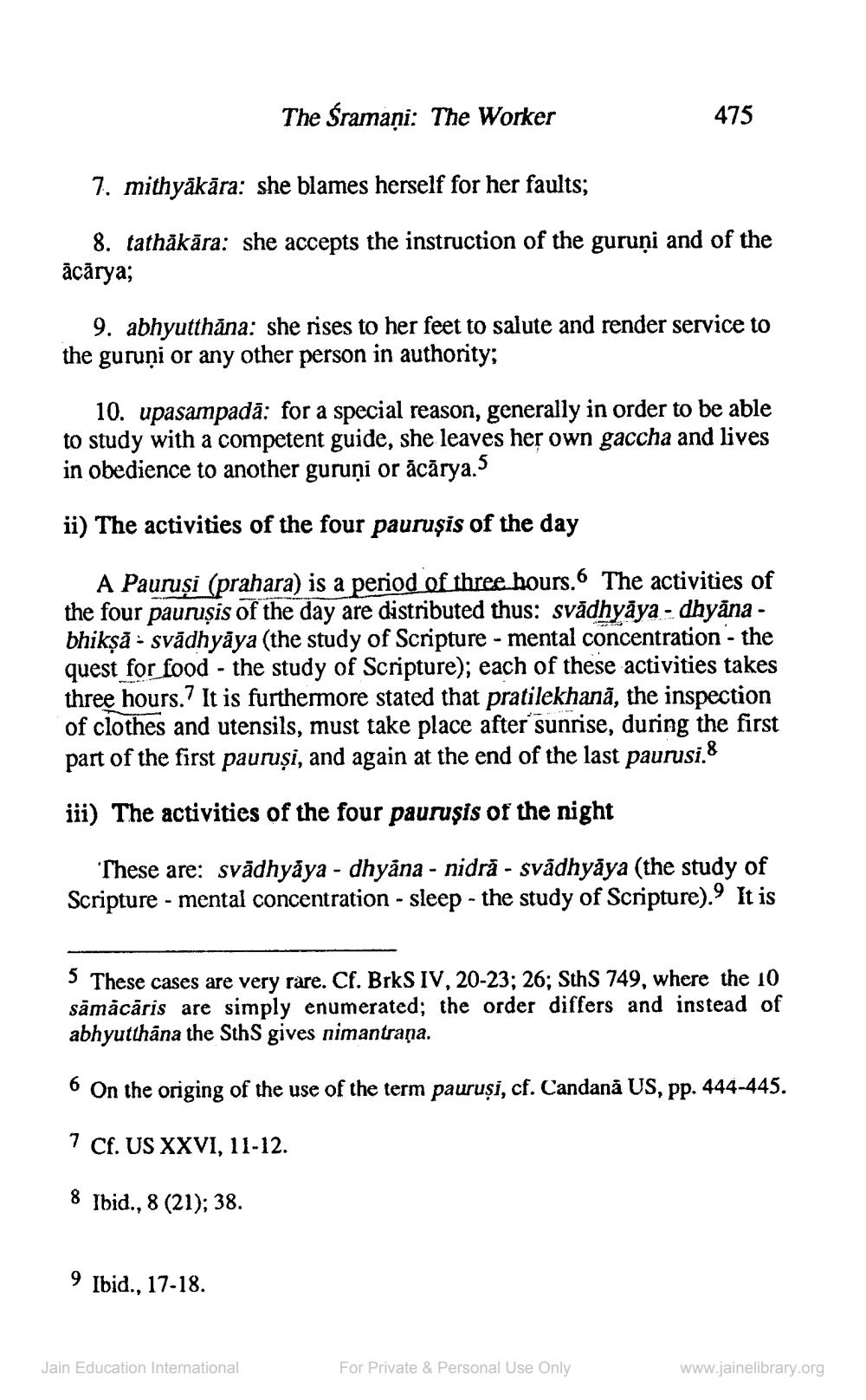________________
The Śramaņi: The Worker
475
475
7. mithyäkāra: she blames herself for her faults;
8. tathākāra: she accepts the instruction of the guruņi and of the ācārya;
9. abhyutthåna: she rises to her feet to salute and render service to the guruņi or any other person in authority;
10. upasampada: for a special reason, generally in order to be able to study with a competent guide, she leaves her own gaccha and lives in obedience to another guruņi or ācārya.S
ii) The activities of the four paurusis of the day
A Pauruşi (prahara) is a period of three hours. The activities of the four paurusis of the day are distributed thus: svādhyāya - dhyāna - bhikṣā - svādhyāya (the study of Scripture - mental concentration - the quest for food - the study of Scripture); each of these activities takes three hours. It is furthermore stated that pratilekhanã, the inspection of clothes and utensils, must take place after sunrise, during the first part of the first pauruși, and again at the end of the last paurusi.8
iii) The activities of the four paurusis of the night
These are: svādhyāya - dhyana - nidrā - svādhyāya (the study of Scripture - mental concentration - sleep - the study of Scripture).' It is
5 These cases are very rare. Cf. BrkS IV, 20-23; 26; Sths 749, where the 10 sāmācāris are simply enumerated; the order differs and instead of abhyutthāna the SthS gives nimantrana.
6 On the origing of the use of the term pauruși, cf. Candană US, pp. 444-445.
7 Cf. US XXVI, 11-12.
8 Ibid., 8 (21); 38.
9 Ibid., 17-18.
Jain Education International
For Private & Personal Use Only
www.jainelibrary.org




